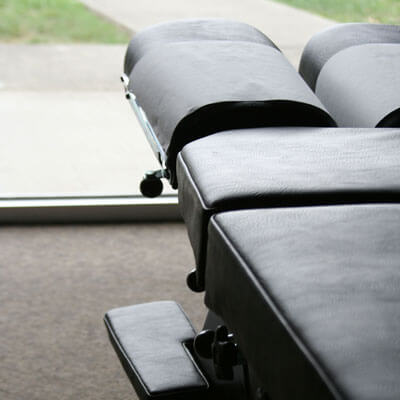 Subluxation (spinal misalignment) to a chiropractor is like a cavity to a dentist. You can have them and may not know it, but if left long enough uncorrected, it will manifest into a symptom: an ache, pain, spasm, or dysfunction in the body.
Subluxation (spinal misalignment) to a chiropractor is like a cavity to a dentist. You can have them and may not know it, but if left long enough uncorrected, it will manifest into a symptom: an ache, pain, spasm, or dysfunction in the body.
So when we look for subluxation in the spine, which is misaligned vertebrae, they typically happen from stress; we all have daily physical, chemical, and emotional strains. Physical ones could be due to car accidents, slips, falls, or even the stress of sitting at a computer with poor ergonomics. Chemical types of stress can come from household products or the air we breathe. Traumatic events or painful memories can be forms of emotional stress.
The Importance of a Manual Evaluation
Chiropractors are trained professionals who can feel the spine and detect when it is functioning properly or if there are misalignments. Using their hands, they can assess the motion and alignment of the vertebrae. Subluxation puts pressure on the nerves as they exit the spinal column, leading to improper functioning of the associated organs or muscles.
To help patients understand this concept, chiropractors often use the analogy of a breaker box in a home.
“Just like a tripped breaker causes the lights to go off, a subluxation along the spinal column can affect the nerves similarly, disrupting the flow of signals and impacting bodily functions,” said Dr. Mark.
Diagnostic Imaging
In addition to manual evaluation, we use X-rays to better understand the patient’s condition. X-rays can reveal shifts and misalignments in the vertebrae and any deterioration of the discs between them. This visual representation allows chiropractors to show patients the source of their pain and develop personalized treatment plans to correct the issue and prevent future problems.
INSiGHT Millennium Subluxation Station
At our office, we go even further by utilizing advanced technology called the INSiGHT Millennium Subluxation Station. This computerized system helps us determine which areas of the nervous system are experiencing interference. It includes two main tests:
Thermal Imaging
This test involves a gentle scanning process where temperature changes along the spine are measured. These temperature variations correspond to specific portions of the autonomic nervous system, providing valuable insights into the patient’s condition.
Static EMG Test
This non-invasive test measures nerve flow to the surrounding muscles by touching specific points along the spine. It assists in evaluating how well the nerves function as they exit the spine and contribute to muscular activity.
Combined with manual evaluation and X-rays, these tests allow chiropractors to properly diagnose subluxations, track progress, and provide effective care that promotes positive patient responses.
The Value of Proactive Chiropractic Care
While symptoms often improve relatively quickly with chiropractic care, it is essential to understand that symptoms are typically the last things to manifest and the first to disappear. Regular follow-up scans with the subluxation station help monitor progress and identify any areas of concern that may require continued treatment.
Ultimately, chiropractic care goes beyond addressing pain or discomfort. It is about proactive wellness and maintaining optimal spinal health. By ensuring that the spine and nerves function optimally, chiropractors help patients achieve their best health and wellness.
Remember, just like a dentist detects cavities before they become serious problems, a chiropractor can detect subluxations before they lead to significant symptoms. Regular chiropractic care can alleviate discomfort and prevent future issues, allowing you to live a healthier, more vibrant life.
Give Advantage Chiropractic a call today to book an appointment!
